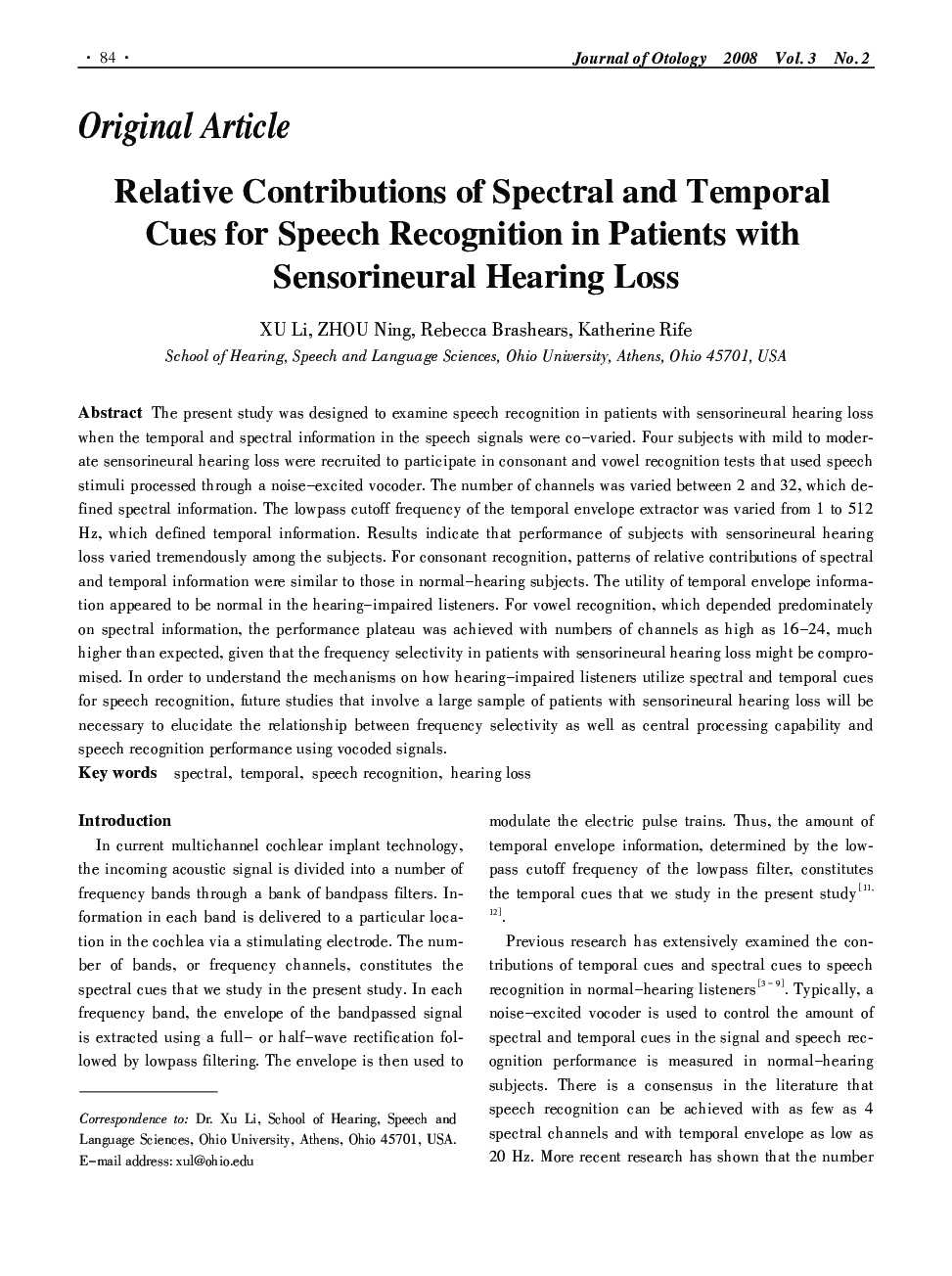| Article ID | Journal | Published Year | Pages | File Type |
|---|---|---|---|---|
| 4116852 | Journal of Otology | 2008 | 8 Pages |
The present study was designed to examine speech recognition in patients with sensorineural hearing loss when the temporal and spectral information in the speech signals were co–varied. Four subjects with mild to moderate sensorineural hearing loss were recruited to participate in consonant and vowel recognition tests that used speech stimuli processed through a noise–excited vocoder. The number of channels was varied between 2 and 32, which defined spectral information. The lowpass cutoff frequency of the temporal envelope extractor was varied from 1 to 512 Hz, which defined temporal information. Results indicate that performance of subjects with sensorineural hearing loss varied tremendously among the subjects. For consonant recognition, patterns of relative contributions of spectral and temporal information were similar to those in normal–hearing subjects. The utility of temporal envelope information appeared to be normal in the hearing–impaired listeners. For vowel recognition, which depended predominately on spectral information, the performance plateau was achieved with numbers of channels as high as 16–24, much higher than expected, given that the frequency selectivity in patients with sensorineural hearing loss might be compromised. In order to understand the mechanisms on how hearing–impaired listeners utilize spectral and temporal cues for speech recognition, future studies that involve a large sample of patients with sensorineural hearing loss will be necessary to elucidate the relationship between frequency selectivity as well as central processing capability and speech recognition performance using vocoded signals.
